How to Gauge Reach with the Cat Line and Google Trends
You may have read the title of this article and thought, “Cats on the internet, huh? I see what you did there.” And you’re right. There’s a love affair between the internet and cats. As much as I’d love to go on a long tangent about this, I’ll save it for a future post and try to stay focused on The Cat Line.
What is Google Trends?
Google Trends is a tool that lets you track how many times people used Google to search a specific term. You can analyze and compare up to five keywords and refine the results with multiple filters. If you want to find out how many people in Brazil are searching for Rick & Morty pics in Google Image Search, then Google Trends is the tool to use.
Cool info. Looking up search volume on random TV shows or celebrities might be fun or interesting, but it probably won’t help you accomplish your goals. This tool, though, does have its place in your internet marketing toolkit, but you need to know how to use Google Trends.
The Cat Line
The Cat Line is the control I use to gauge national and international popularity. Whenever search volume on a term breaks the cat line, it’s a sign the term is incredibly popular. This isn’t always a good thing, though. The velocity at which a brand breaks the Cat Line is a strong indication of how quickly the brand will burn through it’s audience. If what goes up must come down, then on Google, any search term with popularity that goes straight up will typically plummet down at similar angle. This doesn’t mean search interest drops to zero. Instead, the term loses a little more popularity than it gained. This results in an expensive campaign that pushes the needle in the opposite direction.
It’s easy (though incredibly expensive) to buy enough advertising to drown people in your message. You might see an increase in popularity, and you easily massage the numbers to back up that claim. But it’s important to think about velocity because the bandwagon effect cuts both ways. Like an urban legend, genuine popularity and brand loyalty develop over time. Some brands purchase enough display media to force their products into the limelight. This is something we can detect on Google Trends. In fact, we can even see the effects of purchased popularity with celebrities and pop stars. Think of the below graph as a mathematical expression of a “one hit wonder.”
Since no one likes having things shoved down their throats, the internet often responds to this tidal wave of popularity with sarcastic memes, derision, or even outright trolling. Anyone remember the Mountain Dew “Dub the Dew” campaign? 4chan does. It was really popular, but for all the wrong, forced reasons.
Crossing The Cat Line
This is why the cat line is important. Crossing the cat line isn’t a goal to accomplish immediately, but instead eventually. If you’re just starting out, you probably need to pay more attention to search volume on relevant keywords in comparison to the taco line (more on that below).
It’s also worth mentioning that breaking the cat line isn’t always the early alert before a PR disaster. Products like the iPhone see consistent and sustained growth in popularity. In fact, the iPhone broke the cat line first in 2007. Since then, Apple has incrementally expanded the iPhone’s reach. They started with a single carrier in the U.S. and eventually grew market penetration into a global phenomenon that spans almost every country. The iPhone is definitely an outlier, but it’s also a reminder of how important context and timing are when analyzing a brand’s popularity and growth online.
The Taco Line
I use the taco line to gauge regional/state popularity for a specific product as well as general popularity of head-terms like “orthodontist” and “orthodontics.” I use this line to narrow the keyword strategy for local businesses. Sure, I could use Keyword Planner to get the estimated volume of searches on specific terms, but that tool provides more a snapshot than a film reel. It’s important to see how volume and sentiment change over time because they way people use search tends to change quickly and constantly. If you notice a downward trend on a search term related to your business, it’s either a sign of waning popularity in your industry or a shift in how people describe and search for your products or services. This is insight Keyword Planner rarely reveals.
For instance, many people question whether or not “cord cutting” is a trend that’s gaining moment. There are even experts that question whether or not “cord cutting” is just propaganda from the digital marketing industry. The above graph shows that interest in digital video recorders (DVRs) has been on a consistent decline since at least 2004. It took over a decade for experts to notice “cord cutting” and give it a name, so a tool like Google Trends can provide the insight you need to stay ahead of market trends, and keep your clients positioned favorably for future success.
What About The Spike in The Taco Line?
You may have noticed that odd spike on The Taco Line. Due to a variety of statements and memes relating to the 2016 U.S. Presidential Election, we’ve seen a tremendous increase in searches for tacos. This kind of thing happens, sometimes. After a few more months we’ll have enough data to see whether or not The Taco Line normalizes, or if it’s time to find a new control group. As usual, we will share our analysis and results in a future article.
Double the Cats, Double the Fun
You can also use the plural form “cats” and “tacos” to get more granular comparisons. Search volume for plural terms is typically lower than search volume on singular terms. Adding an “s” to “cat” and “taco” helps provide some midpoints between the singular terms, which are skewed by heavy-hitting keywords like “Taco Bell” and “Grumpy Cat.” I recommend experimenting with all four terms and one of your brand terms to get a feel for how these lines work and when to use them. In this example, the singular terms are twice as popular as the plural terms. In addition, “cats” tend to be four times as popular as “tacos.”
Learning From the Cat & Taco Lines
So now that you’re familiar with the basic applications of these two controls, let’s discuss some of the other ways Google Trends can help you improve your content and advertising campaigns.
Aggressive Marketing, Aggressive Backlash
Like most things, popularity is best enjoyed in moderation. If you start researching pop stars in Google Trends, you’re likely going to run across some eye-opening results. Some artists, while certainly popular, as also backed by hyper-aggressive media campaigns with enormous budgets. A large record label can essentially buy up so much of the available ad space that there isn’t any remaining inventory for competitors. Worse yet, some companies have even used this strategy to price their competitors out of the advertising market entirely. This happened to a few music festivals that signed live-streaming deals with Twitch.tv. The music didn’t match the audience, but Twitch still promoted it on the frontpage. This meant a lot of viewers saw the broadcast, but it didn’t produce any lift for the music festival. As a result, I think it’s important to question whether these partnerships cost more than they return. We always need to pay attention to the cost-benefit analysis of partnerships, and, as marketers, we need to act on what the data says and not on what we personally like.
If you haven’t looked up some of your favorite musicians, TV shows or brands on Google Trends, the data can be a real shock. Keep in mind that after the release of the iPhone in June 2007, more people have participated in search on a more personal level. As mentioned before, though, The Cat Line and The Taco Line maintain a constant search share (percentage-wise) throughout this rise in search volume due to increased smartphone usage.
Too Big to Fail, Too Popular to Succeed
Aggressive marketing tactics often create a company that is “too big to fail.” Add that to a hype campaign and you also end up with a product or celebrity that is also “too popular to succeed.” The bandwagon effect isn’t unidirectional. People who are quick to hype your brand are also quick to criticize it. On the internet, this is usually in the form of satirical memes which evolve into full-on trolling. This tipping point marks the moment your brand went from social media darling to the town whipping post. I haven’t seen many brands survive this kind of undertow. Typically, they just sort of fade away until they’re destined to resurface again as the reincarnation of “Rick Rolling.”

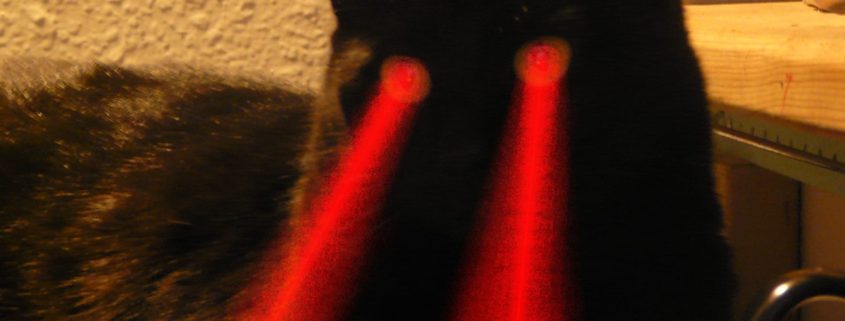
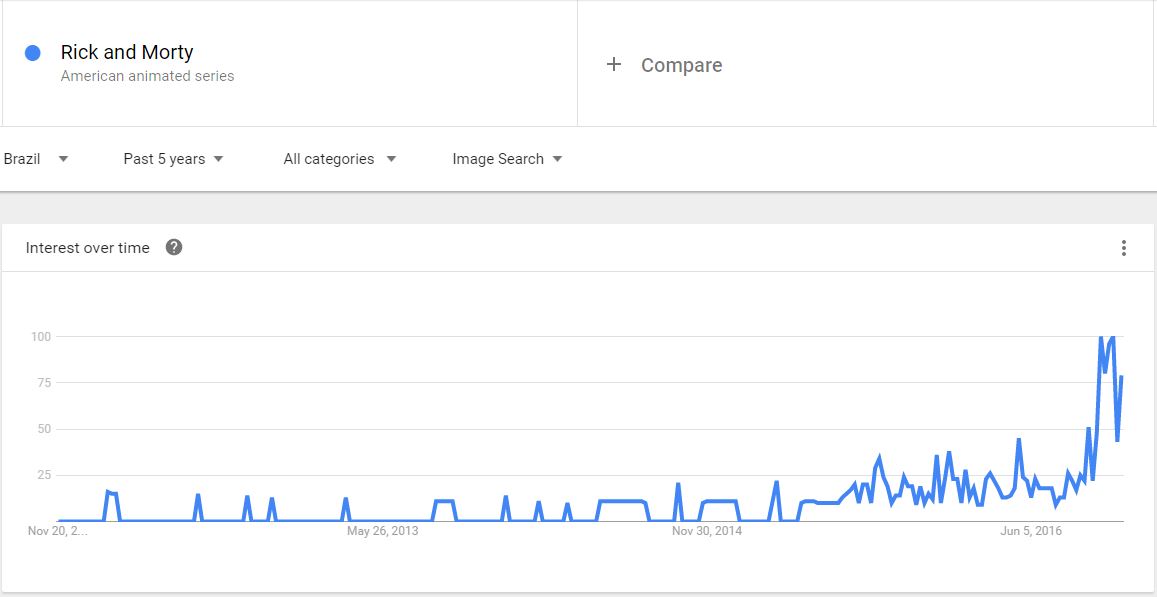
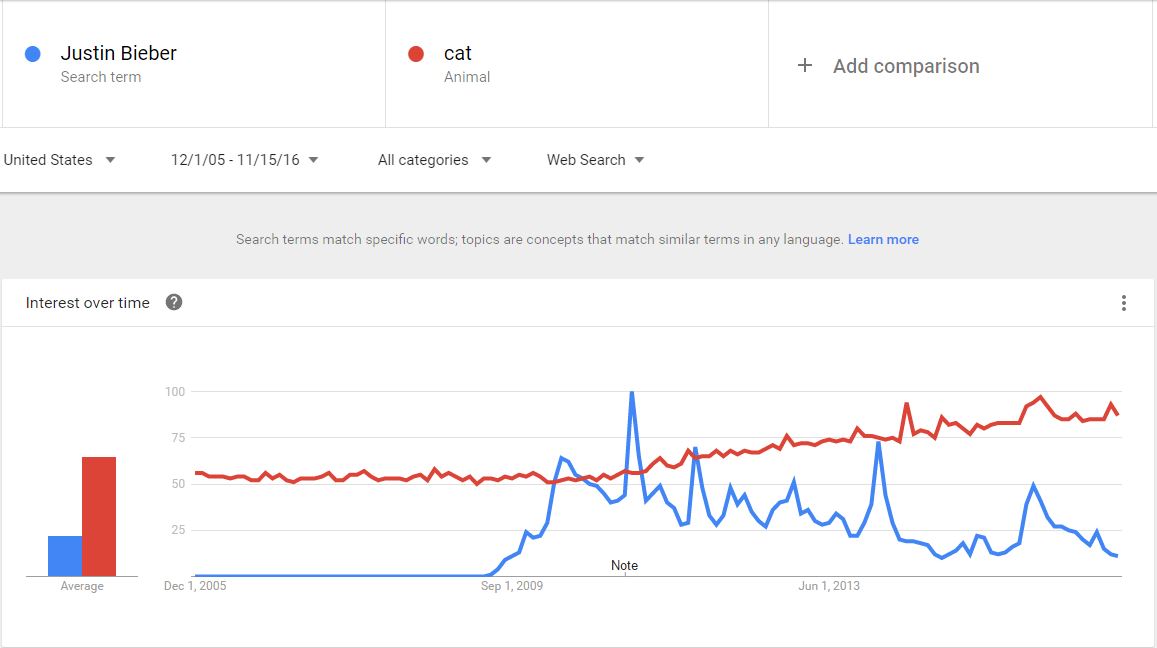
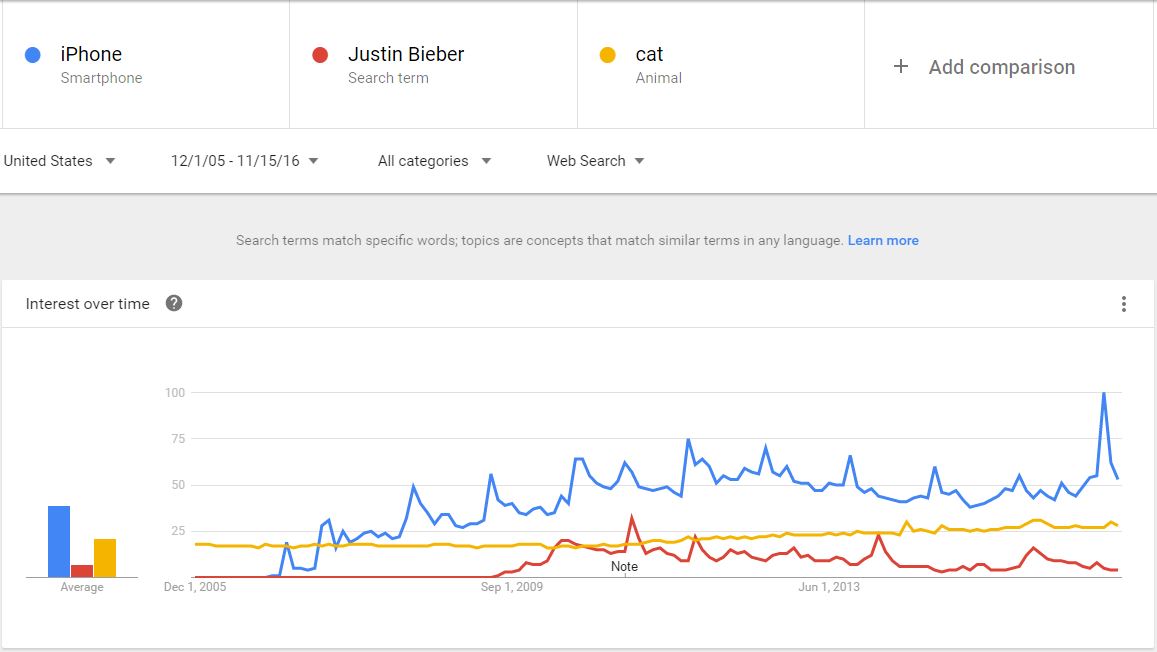
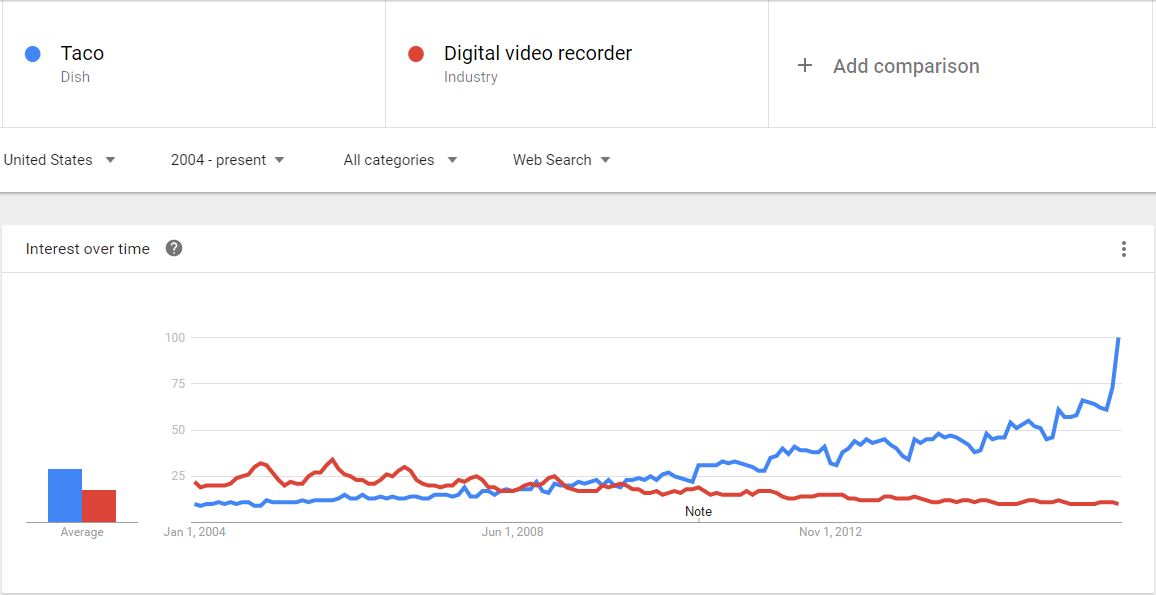


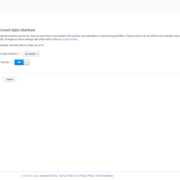




Leave a Reply
Want to join the discussion?Feel free to contribute!